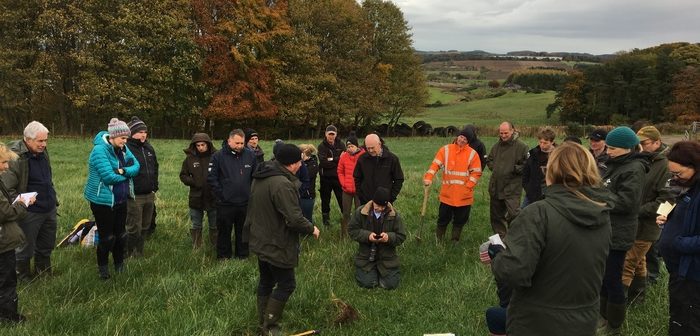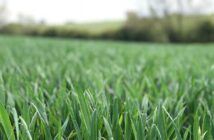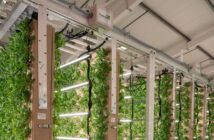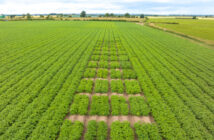Cover crops are an increasingly important part of the farming system at Balbirnie Home Farms, AHDB’s Strategic Cereal Farm in Scotland, where the aim is to have living root in the soils all year round to build fertility and improve resilience. The effects of this strategy are monitored with the aid of the Soil Health Scorecard.
Speaking at the soil health technical workshop presented by AHDB and SRUC at Balbirnie Home Farms, David Aglen, Farms Manager said, “Cover crops are starting to drive our system. I liken them to solar panels, allowing farmers to harvest sunshine, through plants, to produce food and energy.
As long as we can keep something growing in the soil then our solar panels can work all year round, the plants are pumping energy into the soil which keeps the soil biology thriving, albeit at a slightly slower pace in the winter, and then, come spring when it warms up it is all ready to go. In contrast, in a bare stubble field you just have all that biology sitting there, hungry.
We are lucky that we can feed cover crops to the livestock, drill through them in the spring and leave them as a mulch which allows us to keep the soil biology alive.”
Large seeded cover crops
At Balbirnie Home Farms, in Fife, cover crops are drilled as quickly as possible after harvest which can be late in the season. Because of this, Mr Aglen has found that the only cover crops that do well on his farm are large, seeded crops.
He said, “Large seeded crops have a bit of vigour about them and actually get up and do some good. We use winter peas, initially imported from Europe, which we have multiplied up to keep the costs down, rye in front of broad-leaved crops and veg as well as beans as cover crops.”
Speaking at the event, Christine Watson, Professor of Agricultural Systems, SRUC said, “There are some general principles on how we can manage soils and improve soil health; increasing organic matter inputs, increasing the rotation and diversity, cover crops, reducing tillage and introducing livestock.
The idea of having diversity in rotation whether it’s a grass cropping mixture or a cover cropping mixture is going to bring benefits in terms of habitat diversity both above and below ground. Plants are as diverse below the ground as they are above the ground.”
Now entering the second year as AHDB’s Strategic Cereal Farm in Scotland, Mr Aglen explained that the first year was mostly spent baselining and that involved a health check for soils.
He said, “The most important thing that we’ve learnt from our soil baselining studies has been that we need to pay attention to soil compaction, we are seeing pans creeping in here and there.
It has really reinforced our aim to keep a living root in the soil all the time. This year, we have no fields that have been harvested that don’t either have the following cash crop or a green cover crop growing in them. This should help reduce the impact of rain on the soil surface and might lessen the ponding which occurs in 1 or 2 fields over winter because of a very small pan that forms on the surface with rainfall.
No one sized fits all
Mr Aglen said, “We are now direct drilling as much as we can to minimise soil movement and we will continue monitoring our soils annually going forwards.”
All soils are different and there is no one size fits all tool for management. However, soil health reviews can be used to monitor improvements over time where management interventions have been implemented.
Dr Amanda Bennett, AHDB Environment Scientist, who leads on the Soil Biology and Soil Health Partnership said, “To measure soil health we have to take an integrated approach involving chemical, physical and biological assessments. Within the Soil Biology and Soil Health Partnership, funded by the AHDB and the BBRO, we have been working to bring together a robust set of soil health indicators and testing them on farm since 2017.”
The result is the Soil Health Scorecard, which aims to provide information on key indicators of the condition of the soil to help guide soil and crop management decisions. The scorecard combines physical observations of topsoil and earthworm counts in the field, with the results from analysis of soil samples sent for laboratory testing for pH, nutrients and soil organic matter, all done at the same time from the same 20cm x 20cm block of soil dug with a spade.
Dr Bennett said, “For routine soil health monitoring on farm, sampling should take place once per rotation and at the same time of year, in the autumn as the soil wets up and at the same place. Growers should mark a GPS point in an area which is representative and relatively uniform, and work within a 10m radius of that point.
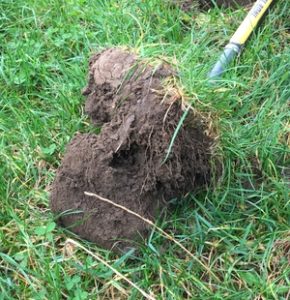 The idea behind the scorecard is that all the indicators have threshold values – benchmarks – and these have been given traffic light coding. If they come back red, outside of the expected range for that indicator, it means there is something to investigate. It might involve an intervention or a different management approach to address that. If the indicator falls in the amber region, then this is borderline and so an area to review more frequently. If the result is in the green area, then continue the rotational monitoring. The results do involve interpretation, and knowledge of the field’s history is a really important factor.”
The idea behind the scorecard is that all the indicators have threshold values – benchmarks – and these have been given traffic light coding. If they come back red, outside of the expected range for that indicator, it means there is something to investigate. It might involve an intervention or a different management approach to address that. If the indicator falls in the amber region, then this is borderline and so an area to review more frequently. If the result is in the green area, then continue the rotational monitoring. The results do involve interpretation, and knowledge of the field’s history is a really important factor.”
The scorecard provides a visual clue as to what growers need to investigate but not what action to take, as this needs to be appropriate to the site and farm business. The AHDB has a wealth of guides and factsheets on soil management that can be referenced on the GREATsoils website to support decision making.
For more results from Balbirnie Home Farms and across the Strategic Cereal Farms network, register for Strategic Cereal Farm results week, 15th – 19th November. Events during this week will bring together Strategic Cereal Farm hosts and researchers in a daily webinar at 12.30 – 2pm focussing on a different topic each day.
For more information visit https://ahdb.org.uk/sfweek2021?fbclid=IwAR2P5_xyFEDKNvymUDYuohDd1DQHSsR6HCiT0aDgctD7zEjo6CuMEutmgG4

